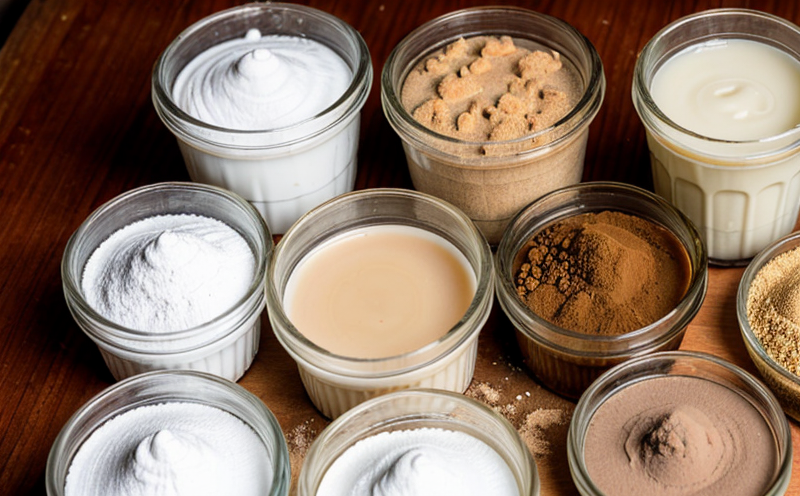Yeast & Mold Testing
In the food and feed industry, yeast and mold testing is crucial for ensuring product safety and quality. Yeasts and molds are ubiquitous in nature and can be found on a wide range of products including grains, cereals, fruits, nuts, spices, and processed foods. While some yeasts and molds are beneficial (such as those used in brewing or baking), others can cause spoilage, produce harmful toxins, and affect the sensory properties of food items.
The primary objective of yeast and mold testing is to identify potential contaminants that could impact product integrity and safety. This includes not only pathogenic species but also those capable of causing off-flavors or reducing shelf life. Regulatory bodies worldwide have established guidelines to ensure that products are free from harmful microorganisms, particularly those that produce mycotoxins such as aflatoxin B1.
Food and feed manufacturers must comply with these standards to maintain market access and consumer confidence. Accurate testing methods and reliable analytical techniques play a pivotal role in achieving this goal. In this article, we will delve into the various aspects of yeast and mold testing, including its importance, applications, quality assurance measures, and frequently asked questions.
Yeast species such as Candida, Debaryomyces, and Torulaspora are common in agricultural products like fruits and vegetables. They can influence fermentation processes but may also contribute to spoilage under unfavorable conditions. Molds, including Aspergillus, Penicillium, and Fusarium genera, pose significant risks due to their ability to produce toxins (mycotoxins) that can be detrimental to human health.
Testing for yeasts and molds involves several key steps: sample collection, preparation, inoculation onto appropriate media, incubation conditions, colony morphology observation, and identification through microscopy or biochemical tests. Techniques like PCR-based assays have also been developed for rapid detection of specific pathogens.
The choice of test method depends on the type of product being analyzed, regulatory requirements, and desired turnaround time. For instance, quantitative methods may be preferred when assessing contamination levels, whereas qualitative approaches suffice for compliance checks.
Accurate identification is essential to determine whether a particular isolate represents a potential hazard or merely an innocuous presence in the environment. Laboratories equipped with advanced technologies such as MALDI-TOF MS (Matrix-Assisted Laser Desorption/Ionization Time-of-Flight Mass Spectrometry) offer precise identifications down to species level.
Regulatory bodies around the globe have set limits for acceptable mold and yeast counts in various food categories. For example, EU Directive 2002/32/EC specifies upper thresholds for certain molds like Aspergillus flavus and A. parasiticus in grain products. Adherence to these regulations ensures compliance with international standards such as ISO 16219-1:2019 which provides guidelines on mold count determination.
Food safety is paramount, especially considering the increasing demand for organic foods and novel ingredients derived from unconventional sources. Proper testing helps maintain consistent quality throughout supply chains while protecting consumers from potential hazards associated with microbial contamination.
Industry Applications
| Product Category | Testing Focus |
|---|---|
| Dairy Products | Prevention of spoilage due to lactic acid bacteria and other microorganisms. |
| Baked Goods | Ensuring proper fermentation while minimizing unwanted mold growth. |
| Meat & Poultry | Control of spoilage organisms during processing and storage. |
| Fruit Juices | Detection of potential pathogens causing oxidative browning or sedimentation. |
Quality and Reliability Assurance
Ensuring the quality and reliability of yeast and mold testing requires adherence to stringent protocols and robust laboratory practices. Compliance with recognized standards like ISO 17025 ensures that testing facilities meet international benchmarks for accuracy, precision, and reproducibility.
A well-qualified team equipped with state-of-the-art equipment is crucial for delivering reliable results consistently. Regular calibration of instruments and participation in proficiency testing programs further enhance the credibility of analytical outputs.
Continuous training for personnel involved in sampling, preparation, and analysis helps maintain high standards across all stages of the process. This includes understanding how environmental factors like temperature fluctuations or improper storage can affect test outcomes.
Environmental and Sustainability Contributions
Beyond ensuring product safety, yeast and mold testing contributes positively to environmental sustainability efforts by promoting resource efficiency within the food industry. By identifying sources of contamination early on, manufacturers can implement targeted interventions aimed at reducing waste and improving overall operational performance.
Minimizing unnecessary production runs or recalls not only saves resources but also reduces energy consumption associated with manufacturing processes. Additionally, accurate testing supports sustainable sourcing practices by helping companies select suppliers who adhere strictly to quality control measures.





